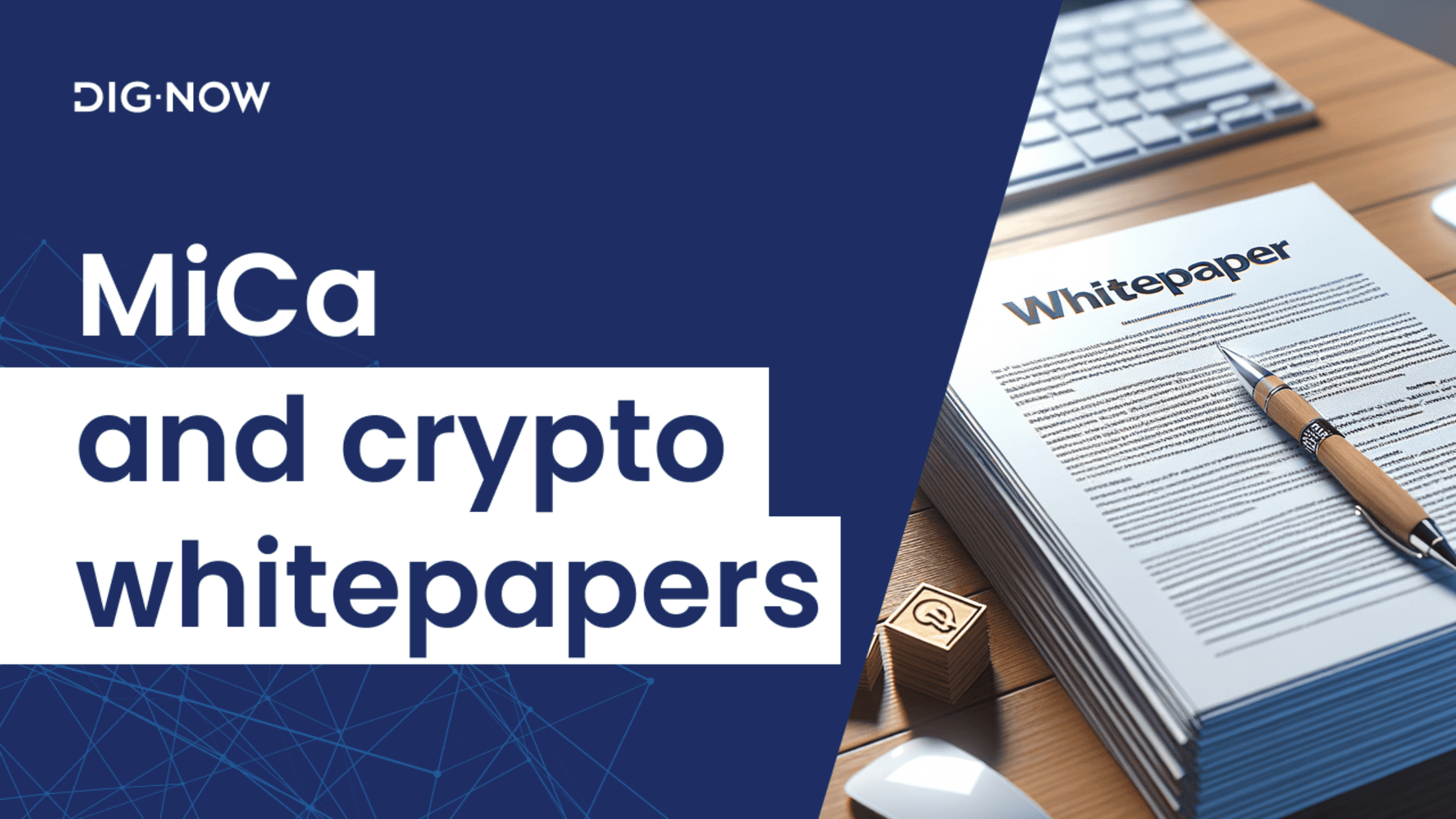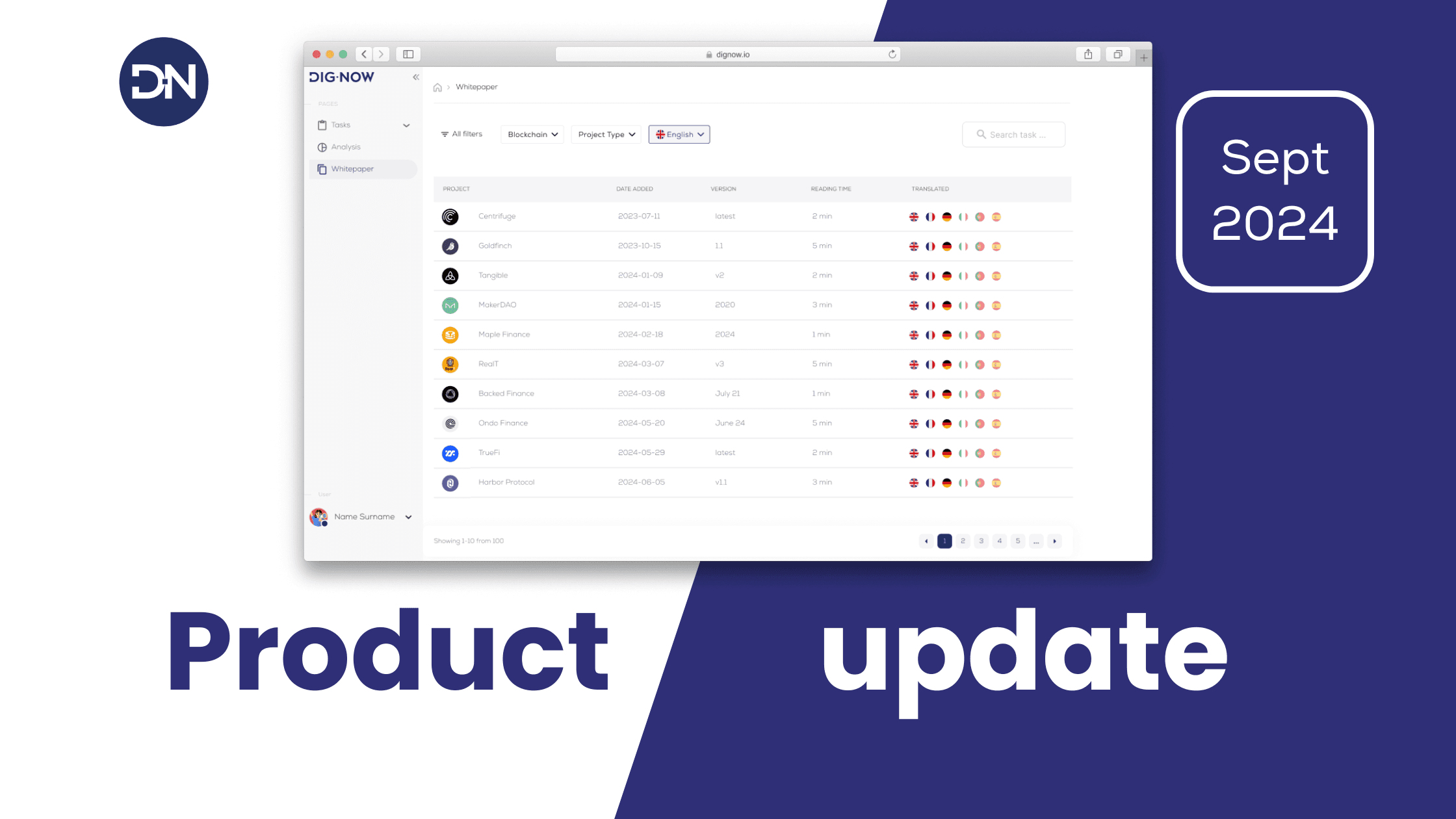


The cryptocurrency landscape in Europe is undergoing a significant transformation with the introduction of the Markets in Crypto-Assets Regulation (MiCa).
Are you prepared for the changes that MiCa brings to crypto whitepapers and asset issuance in Europe?
Understanding MiCa - The new regulatory landscape
What is MiCa?
MiCa stands for Markets in Crypto-Assets Regulation, a proposed regulatory framework by the European Union aimed at harmonizing the regulation of crypto-assets across member states. Its primary objectives include:
Protecting investors by ensuring transparency and fairness.
Preventing market abuse and ensuring market integrity.
Promoting innovation while maintaining financial stability.
Why was MiCa introduced?
The rapid growth of the crypto market revealed gaps in the existing financial regulations. MiCa addresses these issues by:
Providing legal clarity for crypto-asset issuers and service providers.
Establishing a uniform set of rules across the EU, reducing regulatory fragmentation.
Enhancing consumer and investor protection in the crypto space.
Key components of MiCa
Scope of regulation: Covers various types of crypto-assets not currently regulated under existing financial services legislation.
Regulatory requirements: Sets out obligations for issuers of crypto-assets and crypto-asset service providers (CASPs).
Supervisory framework: Establishes roles for national authorities and the European Securities and Markets Authority (ESMA) in oversight.
Impact of MiCa on crypto whitepapers
New disclosure requirements
Under MiCa, crypto-asset issuers must publish a compliant whitepaper before offering tokens to the public or seeking admission to trading on a crypto exchange.
Transparency: Whitepapers must include detailed information about the issuer, the project, rights attached to the tokens, and associated risks.
Standardization: The regulation specifies the format and content requirements, promoting consistency across disclosures.
Legal obligations for issuers
Issuers are now legally accountable for the information provided in their whitepapers.
Liability: Misleading information or omissions can lead to legal consequences.
Obligations: Issuers must notify regulatory authorities and may need to obtain authorization before token issuance.
Navigating compliance - Strategies for crypto businesses
Conduct a regulatory gap analysis
Assess current practices: Compare existing whitepapers and processes against MiCa requirements.
Identify gaps: Pinpoint areas needing enhancement or revision.
Implement compliance measures
Update documentation: Revise whitepapers to include all required disclosures.
Legal consultation: Engage with legal experts specializing in EU financial regulations.
Staff training: Educate team members about MiCa obligations and compliance practices.
Engage with regulatory bodies
Open communication: Maintain proactive communication with national authorities.
Stay informed: Keep abreast of regulatory updates and guidance from ESMA.
How DigNow Helps You Monitor Compliance
At DigNow, we've developed the first AI-powered platform dedicated to scaling due diligence for digital assets. Our solution offers:
• Automated whitepaper analysis that ensures compliance with relevant regulatory frameworks
• Real-time alerts for compliance monitoring
• Advanced liquidity tracking for digital assets
• A unique hybrid system combining AI technology with community-driven data validation and flagging mechanisms
Conclusion
MiCa represents a significant shift in the European crypto regulatory landscape, emphasizing transparency, investor protection, and market integrity.
Now is the time to act. Ensure your crypto projects are MiCa-compliant to thrive in the new era of European crypto regulation.
Relevant link: https://finance.ec.europa.eu/digital-finance_en
Are you prepared for the changes that MiCa brings to crypto whitepapers and asset issuance in Europe?
Understanding MiCa - The new regulatory landscape
What is MiCa?
MiCa stands for Markets in Crypto-Assets Regulation, a proposed regulatory framework by the European Union aimed at harmonizing the regulation of crypto-assets across member states. Its primary objectives include:
Protecting investors by ensuring transparency and fairness.
Preventing market abuse and ensuring market integrity.
Promoting innovation while maintaining financial stability.
Why was MiCa introduced?
The rapid growth of the crypto market revealed gaps in the existing financial regulations. MiCa addresses these issues by:
Providing legal clarity for crypto-asset issuers and service providers.
Establishing a uniform set of rules across the EU, reducing regulatory fragmentation.
Enhancing consumer and investor protection in the crypto space.
Key components of MiCa
Scope of regulation: Covers various types of crypto-assets not currently regulated under existing financial services legislation.
Regulatory requirements: Sets out obligations for issuers of crypto-assets and crypto-asset service providers (CASPs).
Supervisory framework: Establishes roles for national authorities and the European Securities and Markets Authority (ESMA) in oversight.
Impact of MiCa on crypto whitepapers
New disclosure requirements
Under MiCa, crypto-asset issuers must publish a compliant whitepaper before offering tokens to the public or seeking admission to trading on a crypto exchange.
Transparency: Whitepapers must include detailed information about the issuer, the project, rights attached to the tokens, and associated risks.
Standardization: The regulation specifies the format and content requirements, promoting consistency across disclosures.
Legal obligations for issuers
Issuers are now legally accountable for the information provided in their whitepapers.
Liability: Misleading information or omissions can lead to legal consequences.
Obligations: Issuers must notify regulatory authorities and may need to obtain authorization before token issuance.
Navigating compliance - Strategies for crypto businesses
Conduct a regulatory gap analysis
Assess current practices: Compare existing whitepapers and processes against MiCa requirements.
Identify gaps: Pinpoint areas needing enhancement or revision.
Implement compliance measures
Update documentation: Revise whitepapers to include all required disclosures.
Legal consultation: Engage with legal experts specializing in EU financial regulations.
Staff training: Educate team members about MiCa obligations and compliance practices.
Engage with regulatory bodies
Open communication: Maintain proactive communication with national authorities.
Stay informed: Keep abreast of regulatory updates and guidance from ESMA.
How DigNow Helps You Monitor Compliance
At DigNow, we've developed the first AI-powered platform dedicated to scaling due diligence for digital assets. Our solution offers:
• Automated whitepaper analysis that ensures compliance with relevant regulatory frameworks
• Real-time alerts for compliance monitoring
• Advanced liquidity tracking for digital assets
• A unique hybrid system combining AI technology with community-driven data validation and flagging mechanisms
Conclusion
MiCa represents a significant shift in the European crypto regulatory landscape, emphasizing transparency, investor protection, and market integrity.
Now is the time to act. Ensure your crypto projects are MiCa-compliant to thrive in the new era of European crypto regulation.
Relevant link: https://finance.ec.europa.eu/digital-finance_en
Are you prepared for the changes that MiCa brings to crypto whitepapers and asset issuance in Europe?
Understanding MiCa - The new regulatory landscape
What is MiCa?
MiCa stands for Markets in Crypto-Assets Regulation, a proposed regulatory framework by the European Union aimed at harmonizing the regulation of crypto-assets across member states. Its primary objectives include:
Protecting investors by ensuring transparency and fairness.
Preventing market abuse and ensuring market integrity.
Promoting innovation while maintaining financial stability.
Why was MiCa introduced?
The rapid growth of the crypto market revealed gaps in the existing financial regulations. MiCa addresses these issues by:
Providing legal clarity for crypto-asset issuers and service providers.
Establishing a uniform set of rules across the EU, reducing regulatory fragmentation.
Enhancing consumer and investor protection in the crypto space.
Key components of MiCa
Scope of regulation: Covers various types of crypto-assets not currently regulated under existing financial services legislation.
Regulatory requirements: Sets out obligations for issuers of crypto-assets and crypto-asset service providers (CASPs).
Supervisory framework: Establishes roles for national authorities and the European Securities and Markets Authority (ESMA) in oversight.
Impact of MiCa on crypto whitepapers
New disclosure requirements
Under MiCa, crypto-asset issuers must publish a compliant whitepaper before offering tokens to the public or seeking admission to trading on a crypto exchange.
Transparency: Whitepapers must include detailed information about the issuer, the project, rights attached to the tokens, and associated risks.
Standardization: The regulation specifies the format and content requirements, promoting consistency across disclosures.
Legal obligations for issuers
Issuers are now legally accountable for the information provided in their whitepapers.
Liability: Misleading information or omissions can lead to legal consequences.
Obligations: Issuers must notify regulatory authorities and may need to obtain authorization before token issuance.
Navigating compliance - Strategies for crypto businesses
Conduct a regulatory gap analysis
Assess current practices: Compare existing whitepapers and processes against MiCa requirements.
Identify gaps: Pinpoint areas needing enhancement or revision.
Implement compliance measures
Update documentation: Revise whitepapers to include all required disclosures.
Legal consultation: Engage with legal experts specializing in EU financial regulations.
Staff training: Educate team members about MiCa obligations and compliance practices.
Engage with regulatory bodies
Open communication: Maintain proactive communication with national authorities.
Stay informed: Keep abreast of regulatory updates and guidance from ESMA.
How DigNow Helps You Monitor Compliance
At DigNow, we've developed the first AI-powered platform dedicated to scaling due diligence for digital assets. Our solution offers:
• Automated whitepaper analysis that ensures compliance with relevant regulatory frameworks
• Real-time alerts for compliance monitoring
• Advanced liquidity tracking for digital assets
• A unique hybrid system combining AI technology with community-driven data validation and flagging mechanisms
Conclusion
MiCa represents a significant shift in the European crypto regulatory landscape, emphasizing transparency, investor protection, and market integrity.
Now is the time to act. Ensure your crypto projects are MiCa-compliant to thrive in the new era of European crypto regulation.
Relevant link: https://finance.ec.europa.eu/digital-finance_en
Are you prepared for the changes that MiCa brings to crypto whitepapers and asset issuance in Europe?
Understanding MiCa - The new regulatory landscape
What is MiCa?
MiCa stands for Markets in Crypto-Assets Regulation, a proposed regulatory framework by the European Union aimed at harmonizing the regulation of crypto-assets across member states. Its primary objectives include:
Protecting investors by ensuring transparency and fairness.
Preventing market abuse and ensuring market integrity.
Promoting innovation while maintaining financial stability.
Why was MiCa introduced?
The rapid growth of the crypto market revealed gaps in the existing financial regulations. MiCa addresses these issues by:
Providing legal clarity for crypto-asset issuers and service providers.
Establishing a uniform set of rules across the EU, reducing regulatory fragmentation.
Enhancing consumer and investor protection in the crypto space.
Key components of MiCa
Scope of regulation: Covers various types of crypto-assets not currently regulated under existing financial services legislation.
Regulatory requirements: Sets out obligations for issuers of crypto-assets and crypto-asset service providers (CASPs).
Supervisory framework: Establishes roles for national authorities and the European Securities and Markets Authority (ESMA) in oversight.
Impact of MiCa on crypto whitepapers
New disclosure requirements
Under MiCa, crypto-asset issuers must publish a compliant whitepaper before offering tokens to the public or seeking admission to trading on a crypto exchange.
Transparency: Whitepapers must include detailed information about the issuer, the project, rights attached to the tokens, and associated risks.
Standardization: The regulation specifies the format and content requirements, promoting consistency across disclosures.
Legal obligations for issuers
Issuers are now legally accountable for the information provided in their whitepapers.
Liability: Misleading information or omissions can lead to legal consequences.
Obligations: Issuers must notify regulatory authorities and may need to obtain authorization before token issuance.
Navigating compliance - Strategies for crypto businesses
Conduct a regulatory gap analysis
Assess current practices: Compare existing whitepapers and processes against MiCa requirements.
Identify gaps: Pinpoint areas needing enhancement or revision.
Implement compliance measures
Update documentation: Revise whitepapers to include all required disclosures.
Legal consultation: Engage with legal experts specializing in EU financial regulations.
Staff training: Educate team members about MiCa obligations and compliance practices.
Engage with regulatory bodies
Open communication: Maintain proactive communication with national authorities.
Stay informed: Keep abreast of regulatory updates and guidance from ESMA.
How DigNow Helps You Monitor Compliance
At DigNow, we've developed the first AI-powered platform dedicated to scaling due diligence for digital assets. Our solution offers:
• Automated whitepaper analysis that ensures compliance with relevant regulatory frameworks
• Real-time alerts for compliance monitoring
• Advanced liquidity tracking for digital assets
• A unique hybrid system combining AI technology with community-driven data validation and flagging mechanisms
Conclusion
MiCa represents a significant shift in the European crypto regulatory landscape, emphasizing transparency, investor protection, and market integrity.
Now is the time to act. Ensure your crypto projects are MiCa-compliant to thrive in the new era of European crypto regulation.
Relevant link: https://finance.ec.europa.eu/digital-finance_en



